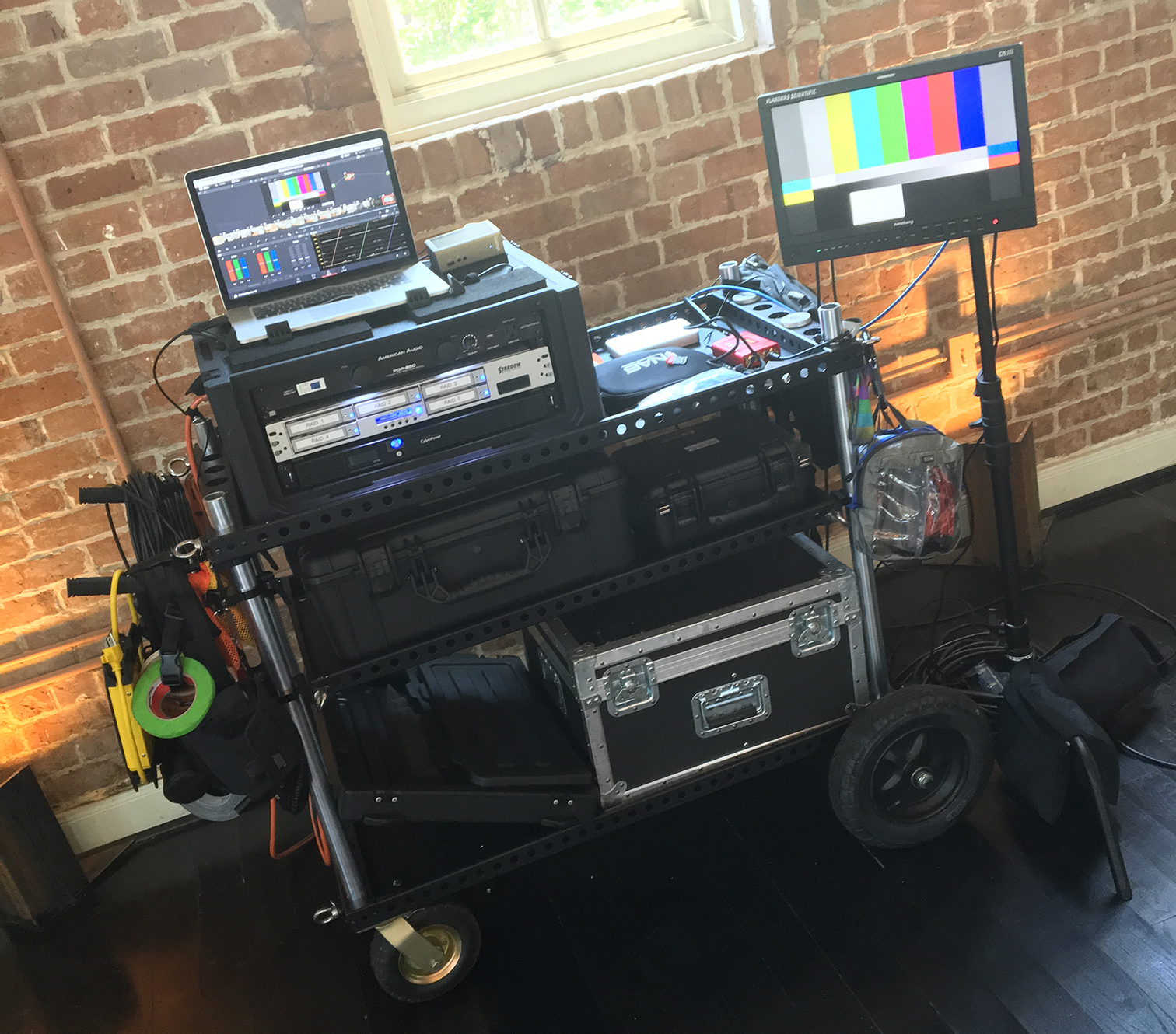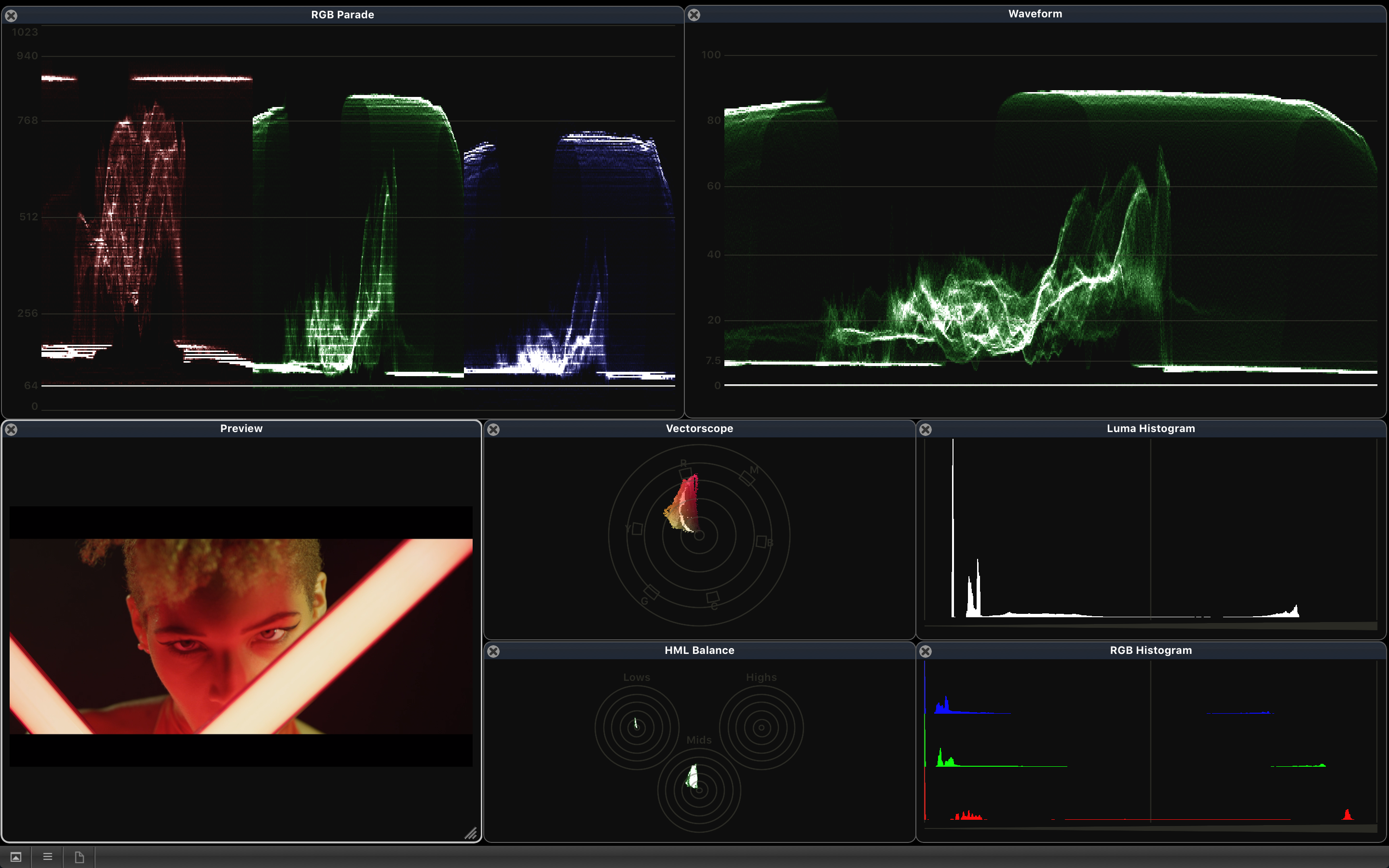ScopeBox Setups — Ryan Nguyen

Ryan Nguyen is an Australian-born colorist and digital imaging technician. He first got started with post-production from online editing and motion graphics, before falling into the rabbit hole that is digital cinematography. He runs Huephoric, a small color grading shop based in Houston, TX.
Most of the company’s finishing portfolio is comprised of commercials, music videos, and narrative film. In addition to grading, Ryan has repurposed a camera cart for on-set data wrangling, color management, and light-duty transcoding.

Describe Your Setup
The heart of the DIT cart revolves around a Macbook Retina Pro- it sits atop a 4U rack-mount chassis, which houses a UPS, RAID, and a power distribution panel. All my cables, adapters, and readers sit in separate cases for easy access and storage. On the software side, I use ShotPut Pro to verify and log my offloads, and use Mikael Lubtchansky’s FoolKat for generating camera reports. For the bigger jobs that require it, Pomfort Silverstack comes into play. And of course, a toolbox full of utilities related to file, metadata, and workflow.
As you know, the world of DIT is a fast and ever-changing landscape, so I’m always looking forward to adding more monitors, converters, and components to the load out. Part of the beauty of it all is its scalability; the kit is entirely modular and can be customised for specific production scenarios.
How are you running ScopeBox? How are you getting the signal into the software?
ScopeBox runs wonderfully (and exclusively) on the Mac platform. For both grading at the suite and monitoring on-set, the Macbook itself powers the software and ingests the signal through a BlackMagic Ultrastudio Thunderbolt device. It may come directly from camera, piped through a recorder or connected wirelessly to a clean loop-through further upstream.

What is your default ScopeBox palette layout and why?
This is a good opportunity to briefly talk about the strength of ScopeBox. At the limit of your monitor resolution and compute power, the entire screen can be divided up and sectioned off in an infinite amount of ways for your immediate monitoring needs. Each scope further has its own distinct settings as well; it’s incredibly flexible and responsive. You can save out your layouts, and call them up with a keyboard shortcut.
Right now, I have a custom layout built for grading at the suite, one for greenscreen shoots, and another for exposure and focus assist during shooting. All of these layouts feature the luma waveform, RGB parade, vectorscope, HML balance, and histograms. For me, these are the most basic core palettes for critical image evaluation. All of these tools used together help me quickly assess the visual profile of the shot, and allow me to monitor channel clipping and gamut excursions in real-time as the shot is being set up. This is done all within context, of course; some creative choices celebrate over/under-exposure, or heavy color casts.
How do you like to use scopes in coloring? What problems do you find yourself turning to your scopes for most?
Our eyes aren’t meant for objectively analysing color and exposure on the basis that they are biologically superior to cameras. Throw in uncalibrated displays and uncontrollable viewing environments to the mix, and it’s anybody’s game. Having scopes is tangibly essential, and sending a thumbs up to the DP after a quick glance at Scopebox makes for all the difference.
What challenges do you see coming up more in the future / how do you think scopes and cc will change in the next 5 years?
I would say the next big challenge with scopes over the next 5 years will have to do with HDR. In the pursuit for wider gamuts, higher dynamic range, and deeper bit-depths, the underlying technology of scopes will have to adapt to these new developing standards in order to properly measure and reflect the integrity of a video signal. Despite our imminent departure from the traditional constraints of Rec. 709, it is my firm belief that the fundamental need for these instruments will forever remain.
Where can people find you online?
You can keep up with my most recent doings at huephoric.com and facebook.com/HuephoricHTX, and peek at more photos here at instagram.com/viewmastery.
ScopeBox Setups is a new series of blog posts where we ask ScopeBox users to send in a photo of their suite and answer a few questions about how they’ve setup their workspace. If you’d like to be highlighted for the series, get in touch!